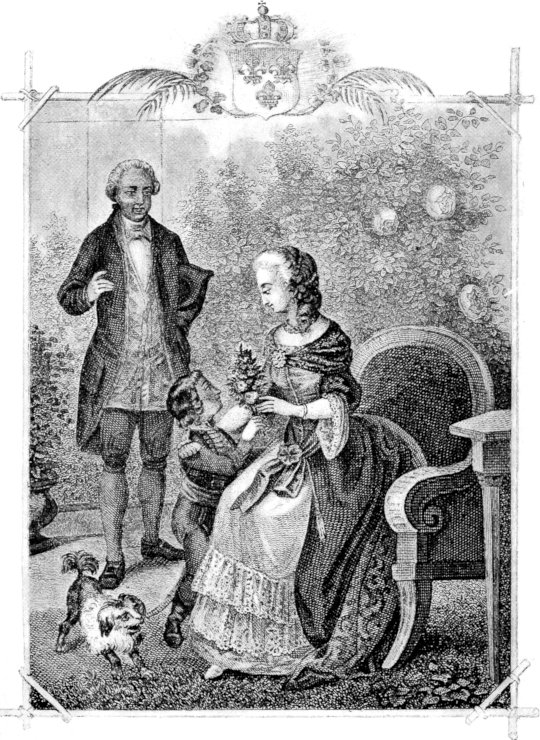

Happy days in the garden
Life Stories for Young People
THE
LITTLE DAUPHIN
Translated from the German of
Franz Hoffmann
BY
GEORGE P. UPTON
Translator of “Memories,” author of “Upton Handbooks on Music,” editor “Autobiography of Theodore Thomas,” etc., etc.
WITH FOUR ILLUSTRATIONS

CHICAGO
A. C. McCLURG & CO.
1905
Copyright
A. C. McClurg & Co.
1905
Published September 16, 1905
THE UNIVERSITY PRESS, CAMBRIDGE, U.S.A.
Translator’s Preface
The story of Louis Charles, second sonof Louis XVI and Marie Antoinette,is one of the most pathetic in the historyof royalty, and has an added interest becauseof the attempts of many romancers and somehistorical writers to raise doubts as to his fate.The brief space of the little Dauphin’s life is measuredby the awful period of the French Revolutionand Reign of Terror. Franz Hoffmann, thewriter of the original (which was published underthe title of “Ein Königssohn,” or, “A King’sSon”), follows the ordinarily accepted version thatthe Dauphin was separated from the King andQueen and confined in the Temple, and that aftertheir execution he was deliberately and cruellyallowed to waste away in body and become thevictim of hopeless disease, remaining thus untildeath ended his sufferings and the inhuman barbarityof his keepers. In the course of his narrativethe author touches upon the most striking eventsof the Revolution, that “dreadful remedy for adreadful disease,” as it has been called, and bringsout in strong relief the character of the well-meaningbut weak King and imperious Queen, as well asthat of the brutal cobbler Simon, the Dauphin’skeeper; but the principal interest centres in thepathetic figure of the little prince. The historicdoubts raised as to the Dauphin’s fate also lendinterest to the tale. One of these has to do withthe identity of Naundorff, who passed himself offas the Duke of Normandy, the Dauphin’s title, andthe other with the Rev. Eleazar Williams of GreenBay, Wisconsin, missionary among the Indians.The claims put forth by friends of Williams attractedwidespread attention and provoked muchdiscussion in this country and France, half a centuryago, because of the extraordinary coincidencesattaching to the alleged identity. It is the generallyaccepted verdict of history, however, that theDauphin was the victim of the Revolution anddied in the Temple in 1795, and as such he appearsin these pages. The details of his fate can neverbe stated with accuracy, so involved and uncertainis the tragic mystery, but Hoffmann’s narrative isundoubtedly correct in its general outlines. Thereare almost as many different versions as there arehistories of that thrilling period.
G. P. U.
Chicago, 1905 BU KİTABI OKUMAK İÇİN ÜYE OLUN VEYA GİRİŞ YAPIN!
Sitemize Üyelik ÜCRETSİZDİR!